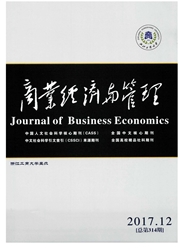

 中文摘要:
中文摘要:
资源对创新的作用研究多集中在资源富余的一面,但是在竞争日趋激烈的今天研究资源匮乏的作用同样很有必要。尤其是,已成为社会创新中坚力量的中小企业在资源普遍匮乏的同时,又灵活通过拼凑致力于创新,分别有研究据此推断资源匮乏和拼凑策略可能引致中小企业创新,但是这些论断尚需细化分析与验证。文章分类分析并以科技型中小企业为样本证实:资源匮乏和中小企业产品创新之间存在显著的倒U型关系;只有选择拼凑有利于中小企业产品创新,并行拼凑的作用恰好相反;连续拼凑负向调节资源匮乏和中小企业产品创新关系,选择拼凑则正向调节这一关系。分类别和多角度探讨资源匮乏、并行策略对于中小企业创新的作用表现是对相关研究的拓展和推进,对理解和促进我国当前中小企业的创新实践也具有参考价值。
 英文摘要:
英文摘要:
Current studies on relationships between resource and innovation mainly focus on the resource sufficient condition. Conversely, seldom of research about innovation focuses on the effects of resource shortage which is also the matter worthy of attention in this age of intense competition. Especially, small and medium-sized enterprises (SMEs) are often short of various resources and have to take bricolage tactics, but are still the main sources of innovation. For this, some scholars have argued that resource shortage and the bricologe tactic may promote innovation, but they can't provide satisfactory explanations. We analyze the main effects of the re- source shortage and three kinds of bricolage on product innovation and testify them by taking the technology-based SMEs as the sample, then find that: resource shortage has an inverted-U-shape relationship with SMEs' product innovation; parallel bricolage hampers prod- uct innovation in SMEs while the selective one stimulates; serial bricolage negatively moderates the relationship between resource short- age and product innovation in SMEs while the selective one positively moderates. This paper extends current studies by exploring the effects and moderating mechanisms therein of resource shortage and bricolage tactics on innovation in different perspectives and conditions, and expects the research outputs to bring more understandings and improvements in SMEs' innovative practice.
 同期刊论文项目
同期刊论文项目
 同项目期刊论文
同项目期刊论文
 期刊信息
期刊信息
